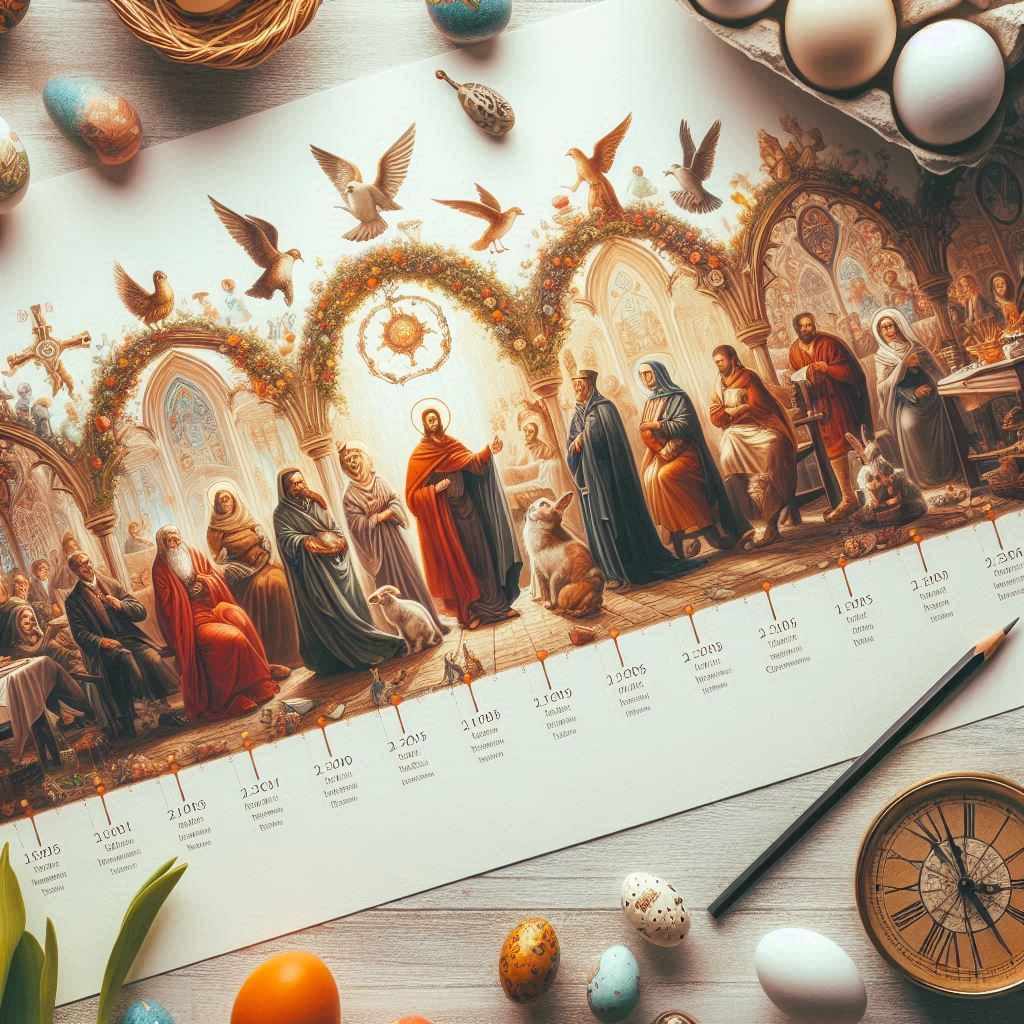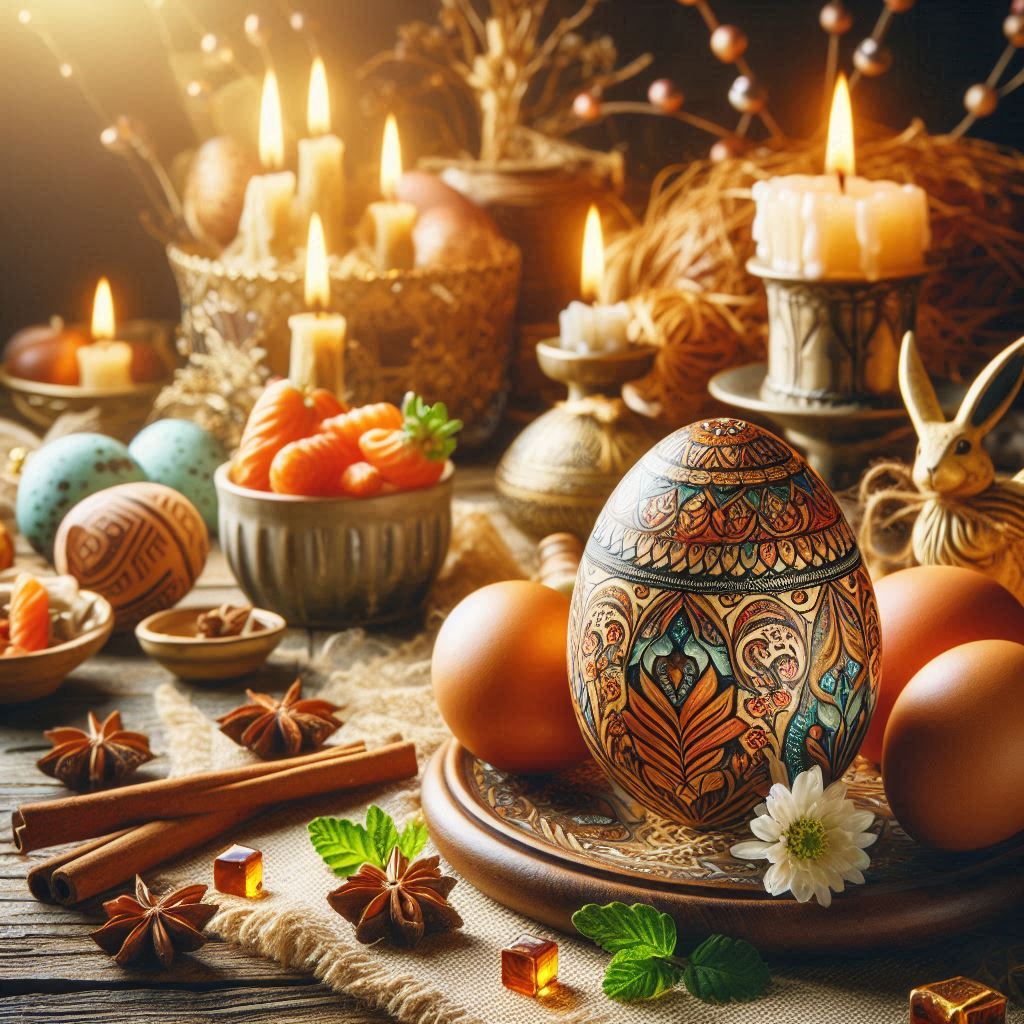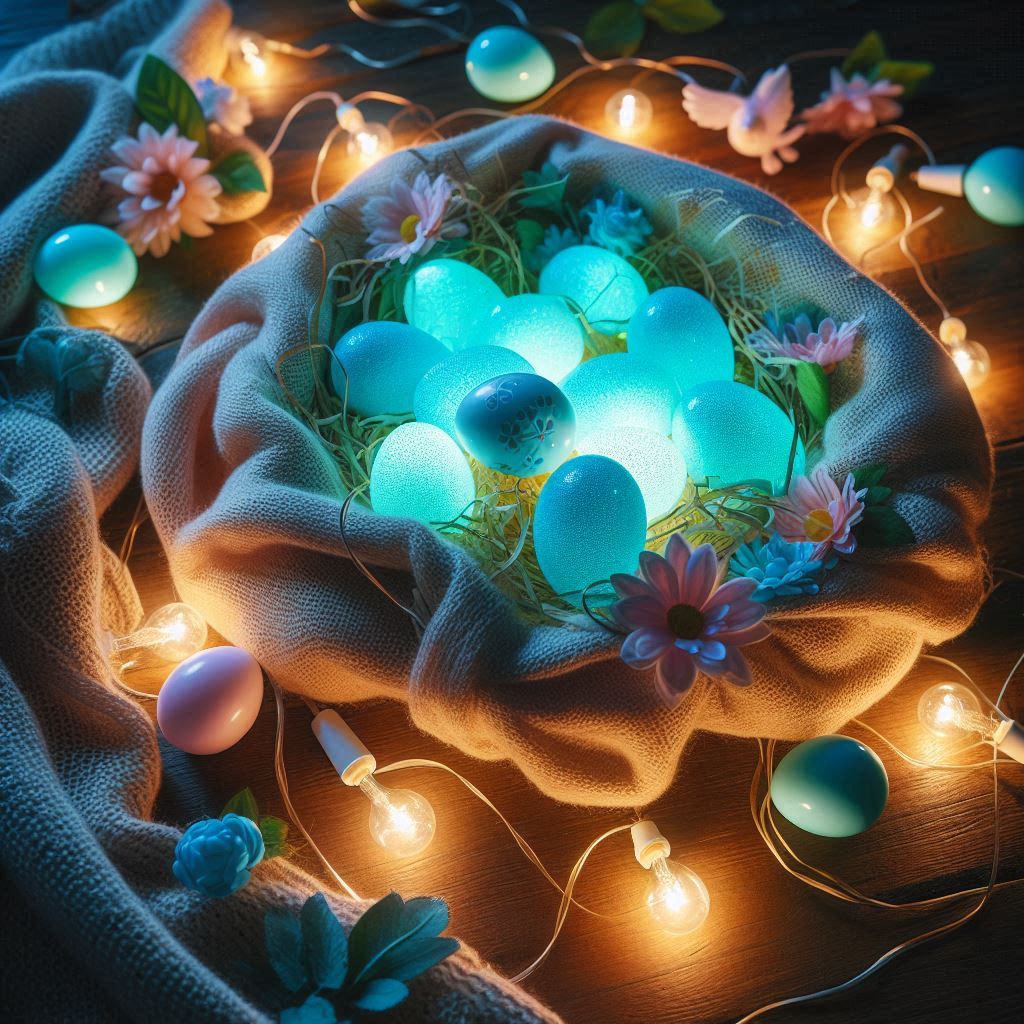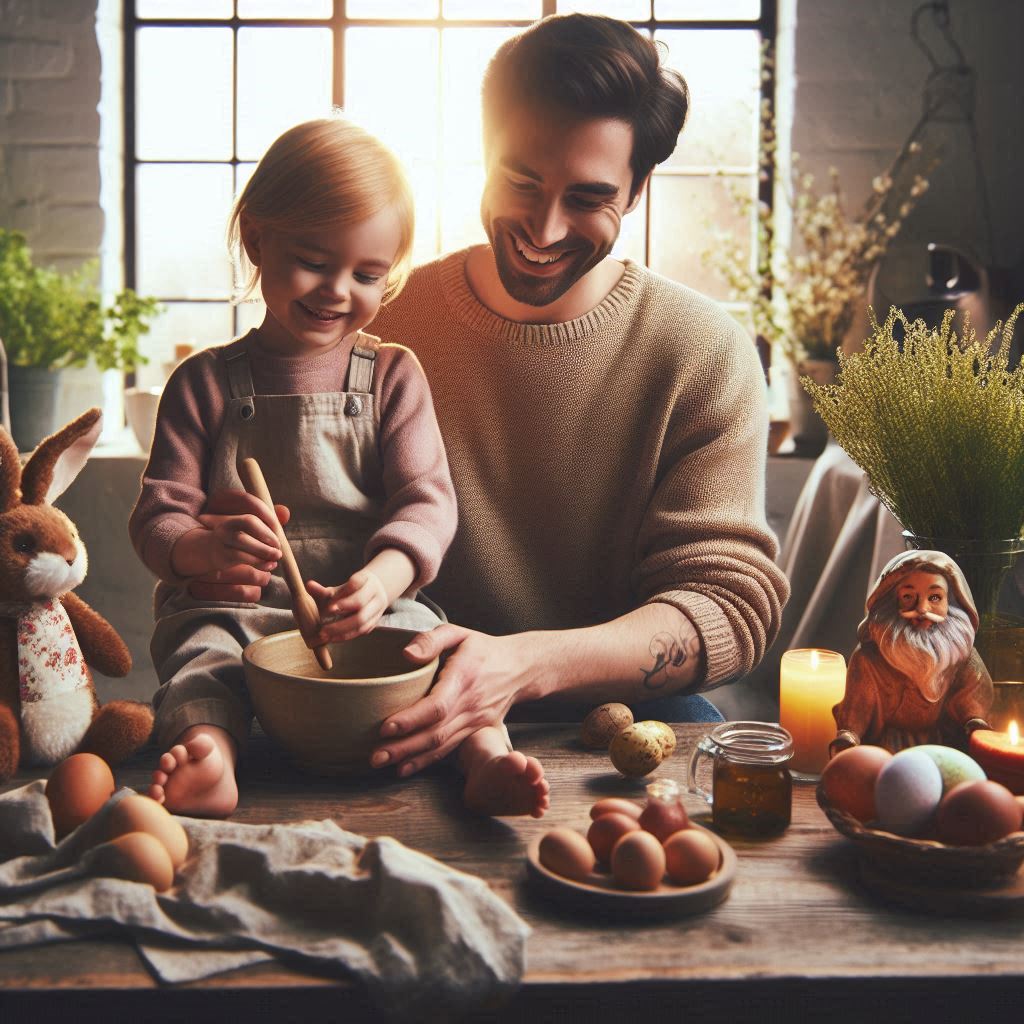History of Easter| Blending New Ideas with Time-Honored Traditions
This page may contain affiliate links, meaning I may get a commission if you decide to make a purchase using my link at no cost to you. See my full affiliate disclosure for more information. I genuinely appreciate your support.
Easter—one of those holidays that just feels joyful, right? Whether you’re in it for the religious significance, the chocolate bunnies, or the vibrant family get-togethers, this celebration has something for everyone. But what about the history behind it all? Why do we crack open colorful eggs, bake hot cross buns, and fabricate stories of bunnies hiding eggs for our children? I chose to write this post because I, myself, was really curious how all these seemingly random traditions were supposed to honor the resurrection of Jesus Christ. It turns out, Easter is a lot deeper than pastel colors and sugar highs.
Let’s take an adventure into the origins of Easter, exploring how some of these quirky traditions came to be, and maybe creating some fresh ideas for your family while still honoring those time-honored customs. Let’s hop in!

The Origins of Easter
Let’s start with the basics: Easter primarily celebrates the resurrection of Jesus Christ, making it one of the most significant events in the Christian calendar. But if you’re wondering why Easter seems to jump around on the calendar every year, here’s the scoop: Easter Sunday falls on the first Sunday after the first full moon following the spring equinox. That’s a mouth full. This means Easter can land anywhere between March 22 and April 25.
This timing aligns with the Jewish celebration of Passover, which is also about renewal and liberation. The overlap is no coincidence—historically, the events surrounding Jesus’s resurrection took place right after Passover, linking the two holidays in themes of rebirth and freedom.
The Christian Significance of Easter
At its heart, Easter represents hope, renewal, and redemption. According to the New Testament, Jesus was crucified, buried, and then resurrected on the third day, symbolizing the triumph over sin and death. This miraculous event is the cornerstone of Christian belief, a promise that through faith, eternal life can be attained.
But Easter isn’t just a one-day event. The Lenten season, a 40-day period leading up to Easter, is traditionally observed with fasting, reflection, and spiritual growth. For many Christians, this culminates in a joyous celebration on Easter Sunday, when the period of reflection ends, and a new season of joy and rebirth begins. Think, New Year-New Me but having taken the time to reflect on how you want to grow spiritually, and as a human. Then, through grace, faith and of course action, being reborn and reinvigorated to become that version of yourself!
Do you participate in Lent? Have you experience any significant epiphanies during that time? Share with us in the comments.
Easter Traditions: How Did We Get Here?
While the religious significance is paramount, Easter traditions have a fascinating history that blends ancient customs and seasonal celebrations. Many of the traditions we celebrate today—like Easter eggs and bunnies—are tied to ancient rituals that predate Christianity. Let’s look at some of the most popular ones:

1. The Easter Egg
These colorful little wonders are more than just a protein packed, versatile food—they’re ancient symbols of new life and rebirth. Early Christians adopted the egg as a representation of Jesus’s tomb, symbolizing resurrection and new beginnings.
But it didn’t stop there. Cultures around the world have been decorating eggs for centuries. The Persians dyed eggs during their spring festivals, celebrating the new season with color and creativity.
In Eastern Orthodox Christianity, eggs are often dyed red to symbolize the blood of Christ, adding a layer of deeper meaning to this simple tradition. Even egg rolling, a fun family activity, is said to symbolize the rolling away of the stone from Jesus’s tomb. Who knew?
2. The Easter Bunny
Now, let’s talk about the most famous fluffy visitor of Easter—the Easter Bunny. While it might seem random, this tradition has roots in German folklore. The “Osterhase,” or Easter hare, was believed to lay eggs for children to find.
When German immigrants brought the tradition to the United States in the 1700s, the Easter Bunny found a new home, hopping into American hearts and Easter baskets. United States is absolutely a melting pot of traditions. And I think that’s what I love most about America.
For kids, the Easter Bunny adds a magical, whimsical element to the holiday. Whether they’re hunting for eggs in the backyard or waking up to baskets filled with treats, the Easter Bunny has become synonymous with joy and surprises.
3. Hot Cross Buns
Hot cross buns—which I literally thought for the longest time, was just the awful tune we all had to learn on the recorder in 7th grade music class. But these spiced, sweet buns are far more than just a jingle engrained in our minds.
Traditionally eaten on Good Friday, these buns are actually marked with a cross. Hence hot-CROSS-buns. Sorry, I’m still baffled it took me so long to realize! More importantly – the cross was to symbolize the crucifixion of Jesus. Dating back to at least the 16th century, they’ve been a staple in many households as a delicious reminder of Easter’s religious roots. And, a hidden gem for me to find out about in my early adulthood, thankfully.
Made with spices, raisins, and currants, hot cross buns are not only a tasty addition to any Easter feast but also believed to bring good luck to those who share them. Fun fact: In some old English traditions, hot cross buns were even thought to have medicinal properties!
4. The Easter Parade
Now, this is one for the fashion lovers. The Easter Parade, especially in cities like New York, is a flamboyant display of springtime fashion. Originally rooted in religious tradition, where people would wear their Sunday best to church, the Easter Parade has evolved into a celebration of color and creativity.
In the 19th century, New York’s Fifth Avenue became the hotspot for these fashionable strolls, and today, it’s all about embracing the joy of spring in style.
Blending Fresh Ideas with Time-Honored Traditions
So, you love the old-school traditions, but you’re also craving something new? The beauty of Easter is its flexibility—it’s the perfect holiday to experiment with fresh ideas without letting go of the traditions that matter most to you. Here are a few ways to mix it up this year:

1. Modern Egg Hunts
Why settle for the same old egg hunt when you can make it next-level fun? I’ve written an entire post dedicated to this one topic, because everyone likes to find treasures in the yard on Easter! Check that post out here “Easter Egg Hunt Ideas to Delight Kids of All Ages” But here’s a couple ideas to get you started:
- Glow-in-the-Dark Eggs: Host a nighttime egg hunt by filling plastic eggs with glow sticks. Kids will be thrilled to search for them in the dark—it’s a magical twist on a classic.
- QR Code Eggs: Hide eggs that contain QR codes linking to fun activities like Easter trivia, games, or even clues for a larger prize. It’s a tech-savvy hunt that adds excitement and surprise.
- Adult Easter Egg Hunt: Who said kids get to have all the fun?! I experienced my first Adult Easter Egg hunt at a friend’s house. You would be surprised at how exhilarating it is to race your best friend over a tub of dishwashing pods!
2. Eco-Friendly Easter
Let’s talk about keeping things green. Easter is a great opportunity to make your celebration more sustainable.
- Natural Dyeing: Skip the artificial dyes and try natural alternatives using beets, turmeric, or spinach to color your eggs. The results are not only gorgeous but also environmentally friendly.
- Reusable Decorations: Invest in eco-friendly decor that can be used year after year—think fabric bunting, cloth napkins, and ceramic eggs. Not only do they cut down on waste, but they also add a personal, long-lasting touch to your home.
- Seed-Filled Eggs: Instead of filling plastic eggs with candy, use paper eggs and fill them with flower or vegetable seeds. After the hunt, encourage kids to plant their treasures in the garden, teaching them about growth and sustainability.
3. Cultural Fusion
Want to add a little global flavor to your Easter table? Incorporating international dishes can honor the holiday’s global roots while adding a unique twist to your feast.
- Greek Tsoureki: A sweet, braided bread flavored with orange zest and spices, perfect for adding an international flair to your brunch.
- Italian Colomba di Pasqua: This dove-shaped cake, adorned with almonds and sugar, symbolizes peace and is a beloved treat during Easter in Italy.
- Spanish Torrijas: These cinnamon-soaked, French toast-like delights are a Spanish Easter favorite, perfect for a sweet brunch treat.
To get fully prepared for your Easter brunch check out my post “Easter Brunch| Resurrect Your Tastebuds” and pull some inspiration or copy the whole menu!
4. DIY Easter Fun
Easter is the perfect holiday for hands-on fun. Why not make some DIY activities part of your family traditions?
- Craft Stations: Set up a table where kids (and adults!) can decorate eggs, make bunny masks, or create Easter cards. Use recycled materials for a sustainable twist.
- Family Cooking: Involve everyone in cooking traditional Easter dishes. It’s a fun way to share stories, pass down recipes, and create new memories in the kitchen.
- Game Night: Keep the family entertained with Easter-themed games like trivia or bingo. Add a fun prize Easter basket for the winners!
Keeping Traditions Alive
Traditions give us a sense of connection—to our past, our families, and even to ourselves. They offer a shared experience that grounds us, reminding us of who we are and where we’ve come from. But just because we love the old ways doesn’t mean we can’t refresh them from time to time. Blending the old with the new keeps these traditions vibrant and relevant for future generations.
By adding your personal touch, you not only honor the past but also make sure that your family will continue to create new and cherished memories for years to come.

Join the Conversation
What are your favorite Easter traditions? Do you have any new ideas you’d like to try this year? Drop a comment below and share how you blend the old with the new! Let’s keep the Easter celebration fresh, meaningful, and fun for everyone.
I hope you were able to learn something new from this post. I sure learned a lot in the research of writing it. Have a very blessed and fun Easter, friends!
Giving love to the man upstairs,
Anna




2 responses to “History of Easter & Blending New Ideas with Time-Honored Traditions”
[…] you want to dive a little deeper on the history of Easter, I wrote a great post “History of Easter & Blending New Ideas with Time-Honored Traditions”. Where I actually learned quite a bit while writing it, and I hope you will […]
[…] mentioned this in my other article “History of Easter & Blending New Ideas with Time-Honored Traditions”, which is a great resource if you want to grab some fun ideas for hosting the Easter Celebration! […]